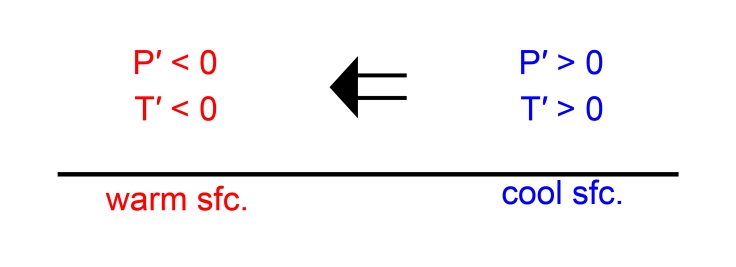When the larger-scale flow is weak, differential surface heating and cooling can generate local circulations as in the over simplified schematic below. The hydrostatic pressure above cooler surfaces will be greater compared to over warmer surfaces. The corresponding horizontal pressure gradient drives flow from the cooler surface to the warmer surface as occurs with sea breezes, land breezes, irrigation breezes, urban heat island circulations and so forth.

The pressure field may be primarily hydrostatic as intended here, or could be non-hydrostatic leading to a buoyant updraft over the warm surface. Inflow from both sides of the warm surface would correspond to horizontal convergence and rising motion. Actual local circulations are never this simple but the above mechanism is often an important component of local circulations.
The following two clips show early morning preferred areas of rising motion over ponds (not visible) which are warmer than the surrounding countryside. Airflow converges toward the warmer air above the pond leading to pulses of upward motion. The upward bursts of air motion suggest non-hydrostatic buoyancy-driven rising motion. The updrafts appear to initiate horizontally propagating modes although corroboration was not possible.
While the early morning air is strongly stratified at the surface and the heat flux is downward toward the surface for most of the region, local warm bodies of water can lead to strong upward heat flux and thus reduce the area-averaged downward heat flux.